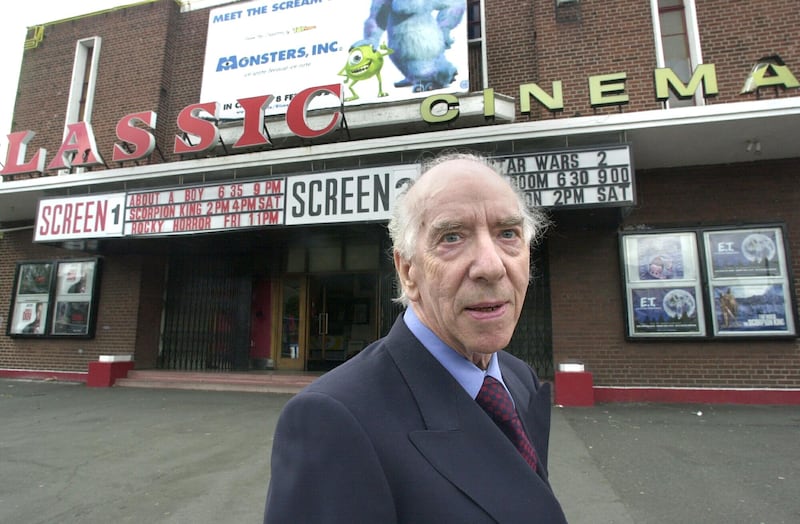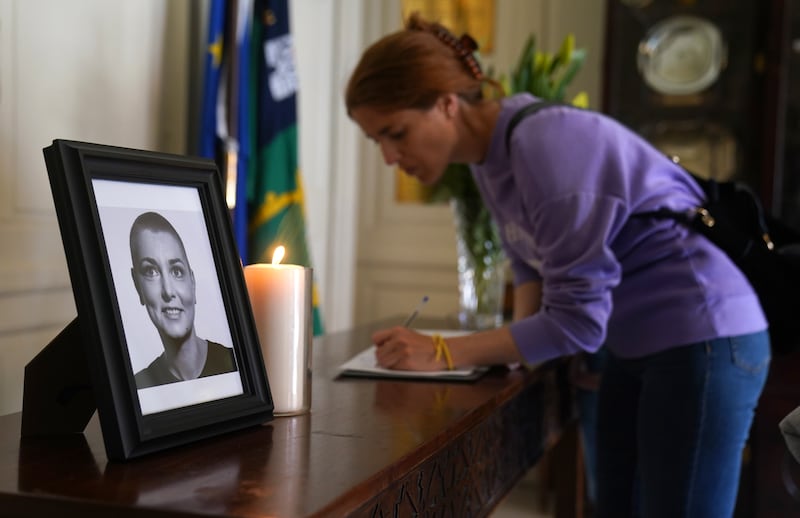The day before I went to see the movie Barbie, I was walking around town with some young people, a daughter and two of my nephews. My head was still full of Sinéad O’Connor. I was thinking about why it is that some people end up as square pegs in a world full of round holes and why we should be grateful to them. Even in the lashings of rain, the city centre was buzzing, with tourists wandering happily around and buskers doing their thing. We went to the bookshop, and then at my daughter’s insistence for lunch in Captain America’s – a still thriving throwback to a different Ireland.
Captain America’s opened in 1971, the year I was born. As we ordered, I tried to describe to the children how being taken to that restaurant was the biggest treat back in my day. They had corn on the cob and a knickerbocker glory the size of a small child. It was, and this is the only word for it, cool. The burgers and milkshakes, the musical memorabilia on the walls, all those gold discs and signed instruments by Johnny Cash and Bruce Springsteen and U2. It had and still has the feel of an all-American diner which was nothing short of exotic when I was growing up. As a concept in Ireland it was way ahead of its time – McDonald’s only arrived on Grafton Street in 1977.
We ordered our food from a lovely young man from Prague. I asked him where the picture of Sinéad O’Connor might be. I knew there was such a photograph but he had never heard of the singer. I showed him a picture of her on my phone and told him Sinéad used to work in Captain America’s as a server back in the day. My nephew did a quick scout around the restaurant and found the photograph. Later, as we watched a server hang red roses above the photo frame, I told the children why she meant so much to so many of us.
After lunch we went around the corner to the Mansion House to sign the book of condolence for Sinéad. I waited behind a few women who were signing the book. When it was my turn I took note of what one of the women before me had written: “Knew you when we were trapped in An Grianán hellhole”. An Grianán was a “training centre” for young people, part of the former High Park Magdalene laundry run by nuns in Drumcondra. Teenage Sinéad O’Connor spent 18 formative months there. As a punishment for bad behaviour she was sometimes forced to sleep up in the top floor of the building, which operated as a sort of hospice for the older women who had been incarcerated in the laundry for decades. Sinéad never forgot them or her fellow teenage inmates, some of whom she knew had been raped by family members in their homes. A candle glowed by her photograph in the Mansion House lobby. “You and your life was very inspiring,” wrote my nephew in the book.
From Brat to Brits: Charli XCX wins five awards, while Fontaines DC take one
Famous Galway music venue that hosted Sinéad O’Connor and Coldplay to become nursing home
Fiachna Ó Braonáin of Hothouse Flowers: ‘I was quite disappointed by Bono. I don’t think Sinéad O’Connor would have done it’
Joseph O’Connor: ‘I don’t know what modern Ireland is yet. I’m suspicious about the new sacred cows’
The next day, as I rummaged for something pink to wear to Barbie in my largely black-dominated wardrobe, I tried to remember the last time I got dressed up to go to the cinema. It must have been the night a friend persuaded me to go to the Rocky Horror Picture Show in Dublin’s Classic Cinema in Harold’s Cross. There were definitely fishnets involved.
I thought especially, as I have done so often recently, of all the young abuse survivors trapped in horror stories in their own homes
The Rocky Horror, for those who need a recap, was a sexually subversive cult musical from the 1970s. It starred the supremely square couple Brad and Janet, who get tangled up with a gender-nonconforming character called Dr Frank N Furter, described as “a sweet transvestite from Transsexual, Transylvania”. For 21 years there were late night showings of the movie at the long gone Classic Cinema, where audience members knew every single word of the script and added their own asides or prompts for the characters on the screen.

At the time, the film was seen as “empowering”, “liberating” and “progressive” on issues such as sexuality and gender. The same film would not get past the initial pitch meeting these days. There are any number of thoughtful essays online dissecting the way the Rocky Horror not only glamorises but normalises rape and sexual assault. The things people shouted gleefully up at sexually inexperienced Brad and Janet would not be acceptable now. Over time, yesterday’s “empowering” can become today’s “problematic”, “outdated” and “unsafe” cultural offering.
In the Stella Cinema in Rathmines, not far from where the Classic once stood, I sat wearing a kimono (pink) and drinking a cocktail (ditto) to watch Greta Gerwig’s frothy, feminist, humanist masterpiece. There are so many stand-out moments, but one scene has stayed with me more than any other. At one point – spoiler alert – the Mattel boss played by Will Ferrell is trying to persuade Margot Robbie’s Barbie to get back in her box. At first she accedes to his demand. Then, as she stands in the box, those fiendishly difficult-to-open white plastic ties slowly fastening around her wrist, she has a powerful awakening. The rest is herstory.

Later at home, still in my pink kimono, slightly fuzzy from the cocktails, I thought about all the women in Ireland like Sinéad O’Connor who wouldn’t get back in their boxes. I thought of the ones who were smart enough not to get into the box in the first place. And I thought of the ones who escaped. I thought especially, as I have done so often recently, of all the young abuse survivors trapped in horror stories in their own homes, who somehow found the courage to take court cases and waive their anonymity, naming themselves so that their abusers could be named and shamed. These are women who back in the day would have been shut up like Sinéad.
I am in constant awe of these waiving women, who in some cases are still shunned for speaking out. From Lavinia Kerwick to Aimée Foley, from Aoife Farrelly to Danielle Gallagher, from Irene Cullen to Karen Harkin. Not household names, but heroes who, even after they fade from the headlines, deserve our continued thanks, solidarity and support.















